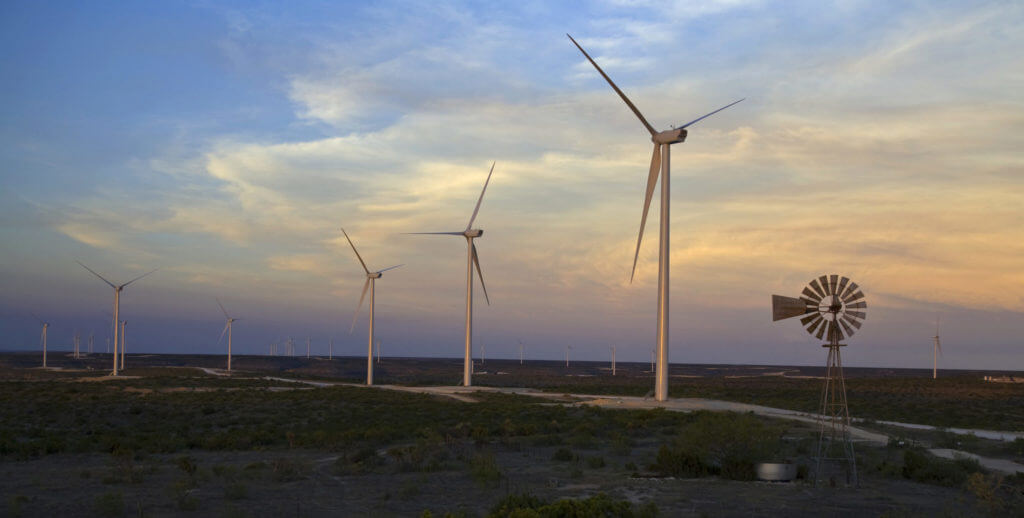Consumer Benefits: Why Commissions & Utilities Like Wind
Anecdotal evidence abounds concerning wind’s affordability. Recent examples:
In 2011, Alabama Power, a subsidiary of Southern Company, made its first wind power purchase. In signing off on the contract, the state Public Service Commission noted that the “price of energy from the wind facility is expected to be lower than the cost the company would incur to produce that energy from its own resource… with the resulting energy savings flowing directly to the Company’s customers.”1
In Colorado, in a late”2011 order approving a wind power purchase by Xcel Energy, the state Public Utilities Commission stated that “the contract will save ratepayers $100 million on a net”present”value basis over its 25”year term under a base”case natural gas price scenario” while providing the opportunity to “lock in a price for 25 years.”2
As 2012 got under way, American Electric Power subsidiary Southwestern Electric Power Co. (SWEPCO) signed long”term power purchase agreements for a total of 358.65 MW from wind projects in Texas, Oklahoma and Kansas. SWEPCO said in a news release that it estimated an average decrease in cost to its customers of about 0.1 cents per kilowatt”hour over a10”year period starting in 2013.
Between 2007 and 2011, wind power provided a full 35 percent of new generation capacity in the U.S., cementing it as a mainstream energy source and key player within the electric industry. Why is wind becoming increasingly popular?
1. Locked”in prices. Wind power provides long”term stability by allowing utilities to lock in prices for 20”30 years and insulating utilities and their ratepayers from volatile fossil fuel price shifts. Wind offers the same peace of mind a fixed rate mortgage gives homeowners. The Colorado PUC said in its Xcel Energy decision: "a utility with a long”term wind power purchase agreement in hand knows exactly how much it will cost to meet its customers’ power needs for the next several decades."
2. Affordable power, made in America. Today, a turbine with a nameplate capacity seven times larger than a typical turbine in 1990 can produce 15 times more electricity. Turbine prices and capital costs have dropped sharply in recent years. More efficient U.S.”based manufacturing is saving on transportation, while creating good American jobs and technology improvements are making turbines better and more efficient. 60% of a turbine is U.S. made now compared to around 25% in 2005.
Savings achieved by the wind power industry…
A January 2012 study from the DOE’s Lawrence Berkeley National Laboratory shows that it costs between 24 and 39 percent less to produce wind energy on a per”kilowatt”hour basis today than it did in 2002”2003.3
A fall 2011 report from LBNL found that “On a $”per”kW [kilowatt of installed nameplate capacity] basis, wind turbine prices in the U.S. have declined by nearly one”third on average since 2008” after price increases in previous years attributed to such factors as larger turbine sizes—which also brought greater energy production.4
…is passed along to utilities and consumers…
- Regions of the country that have experienced significant growth in wind energy over the last several years have also seen significant declines in wholesale power prices, according to Wall Street analysis firm Bernstein Research.5
- The Southeast alone could save $23 billion by 2030 by investing today in renewable energy, with wind being the most competitive source.6
- Obtaining 20 percent of the East’s electricity from wind and building the transmission infrastructure necessary to do so would save consumers over $40 billion per year, or $30 billion once the cost of the transmission was factored in.7
- A study from Charles River Associates examined the impact of building 14 gigawatts of wind power and the associated needed transmission in the Lower Plains. The conclusion: the investment would provide economic benefits of around $2 billion per year. $900 million of these benefits would be in the form of direct consumer savings on electric bills.8
Sources:
1 Order, Sept. 9, 2011, Alabama Public Service Commission Docket No. 31653
2 Colorado Public Utilities Commission, Decision No C11”1291
3 “Recent Developments in the Levelized Cost of Energy from U.S. Wind Power Projects,” Lawrence Berkeley National Laboratory, February 2012
4 “Understanding Trends in Wind Turbine Prices Over the Past Decade,” LBNL, October 2011
5 Bernstein Research, “Power Prices Below Zero,” webcast on May 21, 2009
6 Southeast Energy Efficiency Alliance, by Georgia Tech and Duke University Researchers, “Renewable Energy in the South,” December 2010
7 “The Joint Coordinated System Plan,” a study conducted by many of the grid operators in the Eastern U.S., www.jcspstudy.org.
8http://www.crai.com/uploadedFiles/RELATING_MATERIALS/Publications/BC/Energy_and_Environment/files/Southwest%20Power%20Pool%20Extra”High”Voltage%20Transmission%20Study.pdf
| DOWNLOAD THE PDF | Return to Main Menu |


